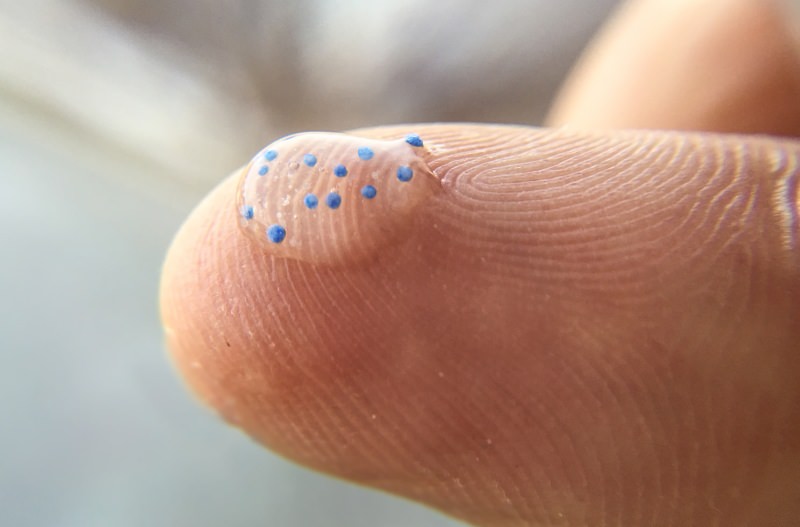However, the fact that microplastics and nanoplastics are now omnipresent in our environment and entering the body through various means is considered a cause of concern by scientific communities worldwide. Researchers are now actively examining how multiple forms of plastic behave inside the body and the health risks associated with their everyday use. The Danger of Microplastics to Your Health By Pierre Mouchette | Bits-n-Pieces Plastics as a human health risk.
Dealing with the ever-growing plastic waste is a most challenging problem today and is intricately linked to global warming and climate change. The plastic waste we produce kills millions of animals yearly and severely affects the lives of birds, fish, marine organisms, and nearly 700 other species. It is a well-known environmental hazard that stays around for ages and pollutes everything, from soil to water to air. But, the overuse of plastics is not only an environmental issue. It poses a direct health risk to humans in multiple ways. We use plastics in many forms and for various uses. It is used in almost everything around us. Plastic has dominated our lives for over a century as a lightweight, durable, and cost-effective material. But, around 20 years ago, researchers discovered that this convenience comes at a cost. Human health and the planet are threatened in a way we do not fully understand. Tiny pieces of fragmented plastics are everywhere, including the air we breathe, the water we drink, the food we eat, the seafood we enjoy, and the soil we cultivate. What are microplastics? Plastic is a highly resilient material that takes a very long time to degrade, but it does get broken down into smaller pieces over time. Sometimes, these pieces can be too small to be readily visible to the human eye. Microplastics are plastic fragments of less than 5mm in diameter. They may enter the body through direct consumption, inhalation, or skin absorption. Synthetic clothes, paint particles, personal care products, car tires, plastic food containers, and plastic water bottles are significant sources of human exposure. Scientists have found that most microplastics in the environment ultimately end up in the oceans, seriously threatening the life and growth of marine animals. From there, they accumulate in the food chain and enter the human body through seafood and table salt. Dangers of microplastics to health. In sea fish and marine animals, microplastics are well-known to delay growth, reduce appetite, increase oxidative stress, decrease fertility, and negatively affect mood and behavior. In animal studies and human cell models, microplastics are shown to cause neurotoxicity, brain inflammation, DNA damage, and mood disorders. Some types are also known to affect the brain development of children. How microplastics affect human health is poorly understood, but existing evidence suggests they could be harmful in many direct and indirect ways. May irritate lung tissues - Experts believe that airborne microplastics may act as lung irritants in the same way as asbestos fibers. Constant exposure for a long time may inflame lung tissues and lead to cancer. Even more worrying are the tiniest specks of plastics called nanoplastics that measure less than 1 micrometer. Nanoplastics may enter cells and impair normal cellular functions, causing widespread inflammation. Plastics contain harmful chemicals - Microplastics can be potentially dangerous when they come from food containers and water bottles. This is because plastics contain many chemical additives added during manufacturing to add strength, color, and flexibility. Research shows that chemicals from plastic containers may leach into food, especially when containers are exposed to heat. It includes endocrine-disrupting chemicals like phthalates and BPA, associated with mood disorders, impaired immunity, fertility issues, menstrual irregularity, and digestive discomfort. Some chemicals found in plastic containers are also known to have carcinogenic effects. May increase the risk of infections - Microplastics can attract chemical pollutants and bacteria from the environment, delivering them directly to cells when consumed through food and water. It may increase the exposure to disease-causing pathogens and irritants. Sources of microplastics exposure Synthetic fibers like polyester are considered a significant source of plastic pollution, shedding trillions of airborne microplastics and nanoplastics each year. They are also responsible for about 35% of microplastics in the oceans. According to a 2020 study, a synthetic cloth can release approximately 4,000 microplastic specks per gram of fabric during a single wash. Storing hot food and water in plastics can also cause containers to shed more microplastics than usual. According to a 2021 study, if you prepare baby food in hot water by shaking the mixture in a plastic bottle, your infant might consume over a million microplastic specks daily. Studies have reported that water bottles in the sun can contaminate water with high amounts of microplastic specks and chemical leaching. Using plastic containers in the microwave can also have a similar effect. Experts caution that this may be true even for containers labeled as microwave-safe, as heat can break chemical bonds. Does your plastic water bottle cause cancer? No, drinking from plastic water bottles does not cause cancer. Experts point out that while some chemicals may enter the food when containers are exposed to high temperatures, the levels are low to cause adverse health effects. Moreover, not all chemicals found in plastics are necessarily toxic. Even when containers are heated for hours, the amount of chemical leaching is not likely to increase the risk of cancer. They also point out that the cancer-causing effect of plastic food containers, reported in some cell models, is impossible in real-life situations. However, plastic containers can be harmful in other ways. For example, they can increase your exposure to endocrine-disrupting chemicals and microplastics. How can you reduce your plastic exposure? While eliminating plastics is neither possible nor necessary, you can take the following steps to reduce exposure.
0 Comments
Your comment will be posted after it is approved.
Leave a Reply. |
Archives
May 2024
|
